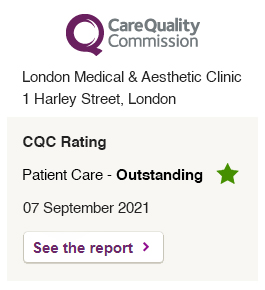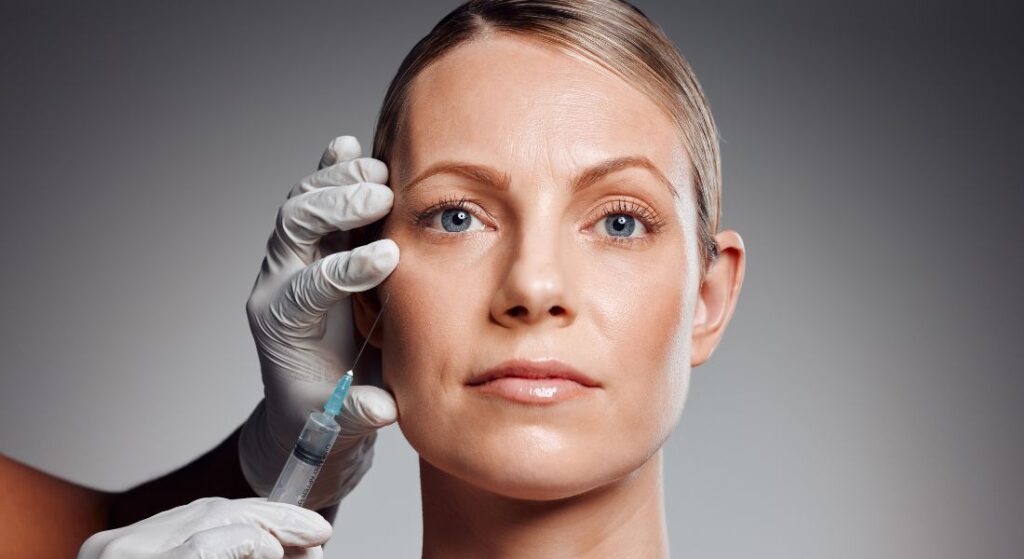
You’ve probably seen incredible results from people who’ve tried Sculptra smoother skin, fuller cheeks, and a more youthful appearance that looks completely natural. But like any cosmetic treatment, it’s normal to wonder: Can Sculptra go wrong?
The short answer is yes things can go wrong when the procedure is done incorrectly or by someone without proper experience. But when handled by a trained professional, the risks are very low, and the results can be outstanding.
In this article, I’ll walk you through everything you should know before your treatment including how Sculptra works, what could go wrong, how to prevent issues, and what to expect from safe, well-administered results.
Understanding How Sculptra Works
Sculptra isn’t your typical filler. Unlike hyaluronic acid (HA) fillers that add instant volume, Sculptra works gradually by stimulating your body’s own collagen production.
Its main ingredient, poly-L-lactic acid (PLLA), is a biocompatible substance that’s been safely used in medical products for decades. When injected beneath the skin, it triggers your body’s natural collagen-building response. Over a few months, this new collagen restores lost volume and improves skin texture from within.
The beauty of Sculptra lies in its subtle, progressive results but that same feature means it demands precision, experience, and careful planning from your practitioner.
Why Sculptra Requires a Skilled Practitioner
With Sculptra, precision is everything. The injector must understand facial anatomy deeply and know exactly where and how much product to place. Too much or too close to the surface can cause lumps, nodules, or uneven results.
Here’s why technique matters so much:
Depth of injection: Sculptra must be placed in the correct layer (deep dermis or subdermal plane).
Even distribution: The product must be diluted correctly and evenly spread to avoid clustering.
Gradual build-up: Sculptra is designed to be layered over time, not all at once.
An experienced aesthetic doctor will always focus on balance and symmetry, planning sessions over several months for the best, most natural outcome.
What Can Go Wrong with Sculptra
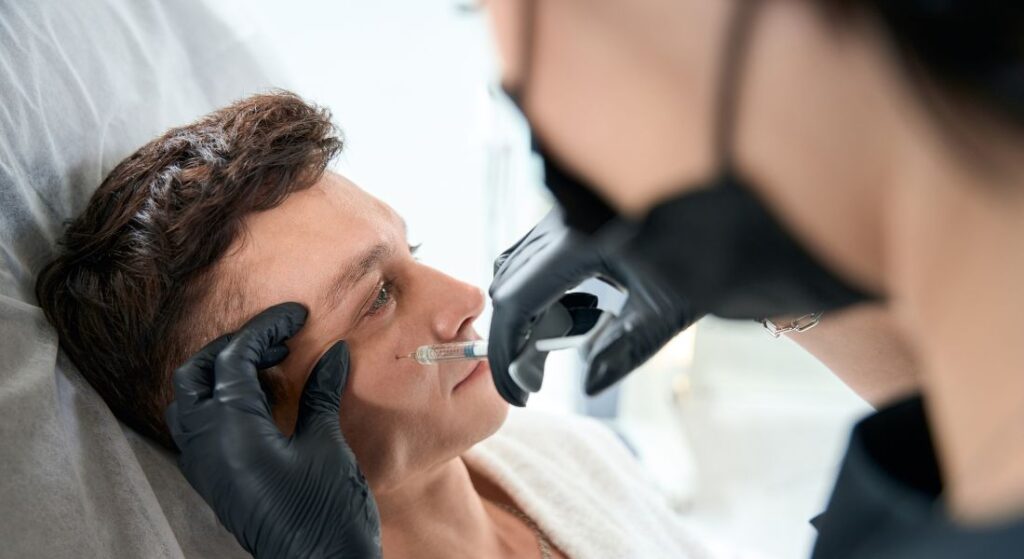
Let’s take an honest look at what might happen when things don’t go as planned. While rare, the following complications can occur especially when Sculptra is performed by unqualified practitioners.
1. Lumps and Nodules
One of the most talked-about side effects is the formation of small, firm bumps under the skin, known as nodules. These may appear weeks or months after treatment.
They usually occur when:
– The product is injected too superficially.
– The dilution ratio is too concentrated.
– The area wasn’t properly massaged after injection.
Most nodules aren’t visible, but they can sometimes be felt when you touch your skin. In more noticeable cases, they may require treatment or gradual resolution over time.
2. Asymmetry
Facial imbalance can occur if one side of the face receives more product than the other, or if collagen stimulation varies between areas.
This typically happens due to:
– Inaccurate injection mapping.
– Uneven product distribution.
– Natural differences in facial muscle tone.
The good news? Asymmetry can often be corrected with follow-up sessions, but it’s best avoided through careful planning and symmetry checks during treatment.
3. Overfilling or Puffiness
Sculptra doesn’t give immediate results so inexperienced injectors may overcompensate by using too much, expecting faster volume restoration.
Once collagen starts building, this excess can cause overfilling, resulting in puffiness or an unnatural look. Since Sculptra can last up to two years, this mistake may take time to fade.
4. Uneven Texture or Firmness
If Sculptra isn’t diluted or massaged properly, it can settle unevenly beneath the skin, creating slight irregularities in texture.
This can give the skin a patchy feel in some areas, especially around the temples or cheeks, where the skin is thinner. Proper dilution and consistent aftercare massages help prevent this.
5. Bruising and Swelling
Like any injection-based treatment, Sculptra can cause temporary redness, bruising, or swelling. These effects are mild and typically subside within a few days.
However, if sterile technique isn’t followed, there’s a small risk of infection which is why choosing a medical-grade environment and a qualified practitioner is essential.
6. Delayed Results Misinterpreted as “Failure”
One of the biggest misconceptions about Sculptra is expecting instant volume. Because the results appear gradually over 6–12 weeks, some people assume their treatment “didn’t work.”
In reality, your skin is building collagen at its own pace and patience is part of the process. Rushing additional injections too soon can increase the risk of overcorrection or lumpiness.
How to Avoid Sculptra Complications
Here’s the best part: most of these risks are completely preventable with proper technique and care. If you’re considering Sculptra, take these precautions seriously.
1. Choose an Experienced Injector
Always check your practitioner’s credentials, training, and experience with Sculptra specifically. It’s a specialised treatment not every aesthetic professional is qualified to perform it safely.
Look for someone who:
– Has in-depth anatomical knowledge.
– Uses the correct dilution and layering method.
– Understands how collagen stimulation behaves over time.
2. Have a Thorough Consultation
Before your treatment, your provider should discuss your medical history, skin condition, and aesthetic goals. They should also explain what Sculptra can realistically achieve and what it cannot.
A professional consultation helps tailor your dosage and session frequency, ensuring gradual and natural-looking results.
3. Follow Aftercare Instructions
Your aftercare plays a crucial role in preventing issues. Most practitioners recommend the “5-5-5” rule:
– Massage treated areas for 5 minutes.
– 5 times a day.
– For 5 days after each session.
This helps distribute the product evenly and minimises the risk of nodules. Skipping aftercare is one of the most common reasons complications develop.
4. Space Out Sessions Properly
Sculptra is not a one-off filler. It’s typically given in two to four sessions, spaced 4–6 weeks apart. Rushing sessions or combining them too closely increases the risk of uneven collagen formation.
Trust your practitioner’s timeline your results will look more natural and balanced when collagen develops gradually.
5. Avoid Poor Injection Environments
Non-medical salons or home-based injectors may not follow sterile procedures. Since Sculptra involves deep tissue injections, even a minor contamination risk can lead to infection or inflammation.
Always choose a medical-grade clinic, where the setting, equipment, and supervision meet safety standards.
Why Sculptra Is Still Considered Safe
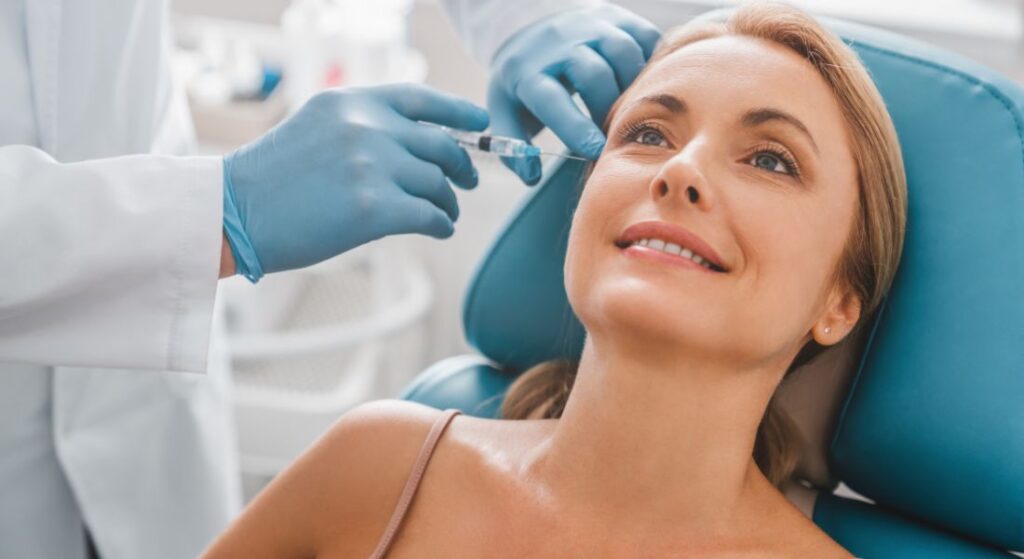
Despite these potential complications, Sculptra remains a very safe treatment when done correctly. It’s FDA-approved, widely studied, and has been used for decades across millions of successful treatments.
The key lies in the injector’s training, experience, and technique. When performed properly, side effects are minimal, and results can last up to two years or more.
Who Should Avoid Sculptra
While most healthy adults are good candidates, Sculptra isn’t suitable for everyone. You should avoid treatment if you:
1. Have an active skin infection or inflammation in the treatment area.
2. Have autoimmune or connective tissue disorders.
3. Are pregnant or breastfeeding.
4. Have a history of keloid scarring.
5. Have recently had laser or chemical skin treatments in the same area.
Your clinician will always review your medical background to ensure Sculptra is appropriate for you.
Signs Your Sculptra May Have Gone Wrong
If you’ve already had Sculptra and suspect something isn’t right, don’t panic most issues can be managed or reversed. Look out for these warning signs:
– Persistent pain or swelling after two weeks.
– Visible or painful lumps beneath the skin.
– Redness or tenderness that worsens instead of improving.
– Uneven results or asymmetry after the final session.
If any of these occur, contact your practitioner immediately. Early intervention can often prevent the issue from becoming long-term.
Can Sculptra Lumps Be Treated?
Yes. In many cases, small nodules resolve on their own over time. For persistent or visible ones, treatments such as steroid injections, massage, or ultrasound-guided aspiration may help.
However, prevention remains the best strategy proper injection technique and consistent aftercare reduce the likelihood of nodules forming in the first place.
What Good Sculptra Results Look Like
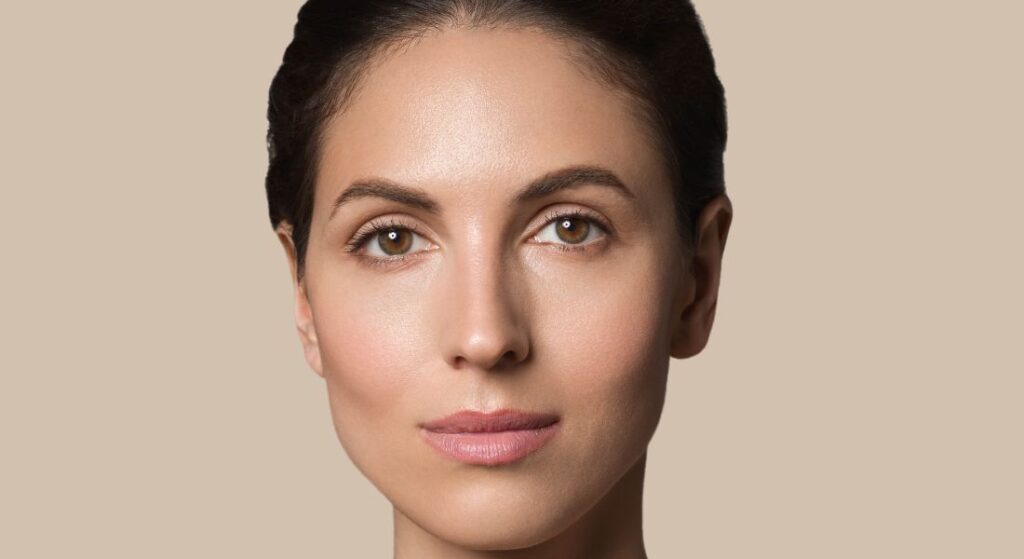
When done right, Sculptra delivers subtle, natural-looking rejuvenation. You won’t suddenly look “different” instead, people might comment that you look refreshed or rested.
The results gradually appear over 8–12 weeks and may include:
– Softer facial contours.
– Restored cheek volume.
– Firmer, more elastic skin.
– A smoother overall complexion.
The change is progressive, which means your improvement looks like natural ageing in reverse never overdone.
How to Choose the Right Clinic
When choosing where to get Sculptra, think long-term. You’re not just paying for injections you’re investing in expertise, safety, and results.
A reputable clinic like LMA Clinic provides:
– Consultation with qualified medical professionals.
– Detailed treatment mapping for your unique face.
– Access to trusted products and sterile environments.
– Clear aftercare and follow-up support.
By choosing a well-established clinic, you significantly reduce the risk of complications and ensure that your Sculptra results are safe, balanced, and beautiful.
Realistic Expectations: It’s About Subtlety, Not Perfection
Sculptra isn’t designed to give instant or extreme results. It’s best suited for people who value subtle improvement and gradual enhancement over time.
If you expect an overnight transformation, you may feel disappointed initially but those who stay patient tend to be the happiest with their outcome. Think of it as long-term skin investment, not a quick fix.
FAQs:
1. How long does it take to see results from Sculptra?
Sculptra works differently from traditional fillers that produce instant volume. Because it stimulates your skin’s natural collagen production, the results develop gradually over several weeks. Most people start to notice subtle improvements in skin firmness and fullness around six to eight weeks after their first session. Full results typically appear after a series of treatments, spaced a few weeks apart, as collagen continues to rebuild beneath the surface. The outcome is gradual and natural-looking, making it ideal for those who prefer a subtle transformation rather than an immediate, noticeable change.
2. How long do Sculptra results last?
The longevity of Sculptra results depends on factors like your age, metabolism, lifestyle, and skincare routine. However, one of its biggest advantages is that it can last much longer than many other injectables. Most patients enjoy visible results for up to two years, and in some cases, even longer. Because Sculptra stimulates your own collagen, the benefits don’t disappear suddenly they fade gradually as your body naturally metabolises collagen over time. Maintenance treatments every 18 to 24 months can help sustain your results.
3. Can Sculptra cause permanent lumps or nodules?
In rare cases, Sculptra can cause lumps (also called nodules) under the skin, but these are typically preventable and not permanent. They usually occur when the product is injected too close to the skin’s surface or if it hasn’t been diluted or massaged properly afterward. These small bumps are often not visible but can sometimes be felt when pressing the skin. Most resolve on their own, but persistent ones can be treated with methods like steroid injections or ultrasound-guided therapy. Choosing a skilled injector and following proper aftercare are the best ways to prevent this issue from happening in the first place.
4. What should I do if I feel a lump after Sculptra?
If you notice a small lump after treatment, it’s important not to panic. Minor nodules can be a normal part of the healing process and may fade over a few weeks as the product integrates and collagen forms. Gentle massage, as recommended by your practitioner, can help smooth the area. However, if the lump becomes painful, visible, or doesn’t improve after several weeks, you should contact your provider for assessment. They may suggest targeted treatment to dissolve or soften the nodule. Early evaluation ensures that any issue is managed quickly and effectively.
5. Can Sculptra be dissolved like hyaluronic acid fillers?
Unlike hyaluronic acid (HA) fillers, Sculptra cannot be dissolved using an enzyme such as hyaluronidase. This is because Sculptra’s active ingredient, poly-L-lactic acid (PLLA), works by stimulating your body’s collagen rather than adding an artificial gel. Once the collagen has developed, it becomes part of your natural skin structure. That said, if complications arise, treatments such as corticosteroid injections, laser therapy, or ultrasound-guided aspiration can help manage the effects. For this reason, it’s vital to ensure your injector is experienced with Sculptra and understands proper technique and dilution ratios.
6. What’s the best age to start Sculptra treatments?
There isn’t a fixed age to start Sculptra, but most people begin considering it in their 30s or 40s when early signs of volume loss and skin laxity become noticeable. Because Sculptra works by encouraging collagen production, starting earlier can actually help slow down visible ageing. Younger patients often use it to maintain firmness and prevent sagging, while older patients appreciate its ability to restore lost volume gradually. The key is to consult with a qualified practitioner who can evaluate your individual skin needs and determine whether you’ll benefit from Sculptra at your current stage.
7. Can Sculptra be combined with other aesthetic treatments?
Yes, Sculptra can complement many other cosmetic treatments, but the sequence and timing are important. It’s often paired with procedures such as botulinum toxin (Botox) injections, laser resurfacing, or microneedling to enhance overall rejuvenation. However, because Sculptra works deep beneath the skin, it’s generally recommended to complete your Sculptra sessions before undergoing surface treatments that could interfere with collagen formation. Your practitioner will create a tailored treatment plan to combine these safely, ensuring that each procedure supports rather than disrupts the effects of the other.
8. What’s the difference between Sculptra and traditional dermal fillers?
Traditional fillers, such as those made from hyaluronic acid, provide instant results by physically adding volume where they’re injected. Sculptra, on the other hand, doesn’t fill space immediately it works by triggering your body’s natural collagen response. Over several weeks, new collagen gradually rebuilds volume and structure beneath the skin. The outcome looks softer, more natural, and longer-lasting. Because of this unique mechanism, Sculptra requires more patience and precision but rewards you with results that evolve subtly and last much longer than typical fillers.
9. How can I tell if my Sculptra treatment is being done correctly?
A well-performed Sculptra treatment should feel comfortable, well-mapped, and medically structured. Your practitioner should begin with a detailed consultation, assessing your facial anatomy, skin condition, and desired results. During the procedure, you should notice that the injections are placed strategically rather than randomly, and your practitioner should explain their technique as they go. Proper dilution, depth, and spacing of sessions are also key signs of a professional approach. After the treatment, your doctor should provide clear aftercare instructions, including the massage routine, and schedule a follow-up visit to monitor your progress.
10. Is Sculptra worth it?
For many people seeking natural, long-term facial rejuvenation, Sculptra is absolutely worth it. It’s not a quick fix, but a gradual investment in your skin’s health and structure. Patients often love the subtlety of the results friends might say you look refreshed without guessing you’ve had any work done. The treatment also has excellent longevity, often lasting up to two years or more, which means fewer maintenance appointments compared to other fillers. As long as you choose an experienced injector and follow proper aftercare, Sculptra can deliver safe, smooth, and beautifully natural results that feel entirely your own.
Final Thoughts: Getting the Best from Your Sculptra Journey
Sculptra can deliver some of the most natural and long-lasting rejuvenation results available today but only when performed with care, experience, and precision. While complications such as lumps, unevenness, or asymmetry can happen in rare cases, they are almost always preventable through proper technique, correct dilution, and consistent aftercare.
Choosing the right practitioner is the most important step you can take. A qualified, experienced injector understands the nuances of facial anatomy, knows how to space treatments correctly, and ensures that collagen builds gradually for a beautifully balanced finish. Your aftercare routine also plays a key role in helping Sculptra settle smoothly beneath the skin and preventing unwanted texture changes.
If you’re considering Sculptra in London, you can contact us at the London Medical & Aesthetic Clinic to discuss your aesthetic goals with Dr Ayham Al-Ayoubi and discover how this advanced treatment can help you achieve natural, long-lasting facial rejuvenation with beautifully refined results.
References:
1. Narins, R.S., Brandt, F., Leyden, J., Jakobsen, J. & Gemperle-Franz, U., 2010. A randomized study of the efficacy and safety of injectable poly-L-lactic acid versus human-based collagen implant in the treatment of nasolabial fold wrinkles. Journal of the American Academy of Dermatology, 62(3), pp.448-462. Available at: https://pmc.ncbi.nlm.nih.gov/articles/PMC12273185
2. “Effectiveness and Safety of Sculptra Poly-L-Lactic Acid Injectable Implant in the Correction of Cheek Wrinkles” (2024). Journal of Drugs in Dermatology, 23(1), pp.1297-1305. DOI:10.36849/JDD.7729. Available at: https://pubmed.ncbi.nlm.nih.gov/38206151
3. de Almeida, H., Leibaschoff, G., & others, 2023. “Efficacy and Safety of Poly-L-Lactic Acid in Facial Aesthetics: A Systematic Review”. Polymers (MDPI), 16(18), p.2564. Available at: https://www.mdpi.com/2073-4360/16/18/2564
4. StatPearls – “Poly-L-Lactic Acid” (2024). NCBI Bookshelf. Available at: https://www.ncbi.nlm.nih.gov/books/NBK507871/
5. Hanf, E. & Gresser, U., 2014. “Benefit and Risks of the Semi-Permanent Fillers Polylactic Acid and Calcium Hydroxylapatite”. Advances in Aging Research, 3, pp.130-141. DOI:10.4236/aar.2014.32021. Available at: https://www.scirp.org/journal/paperinformation?paperid=46008




